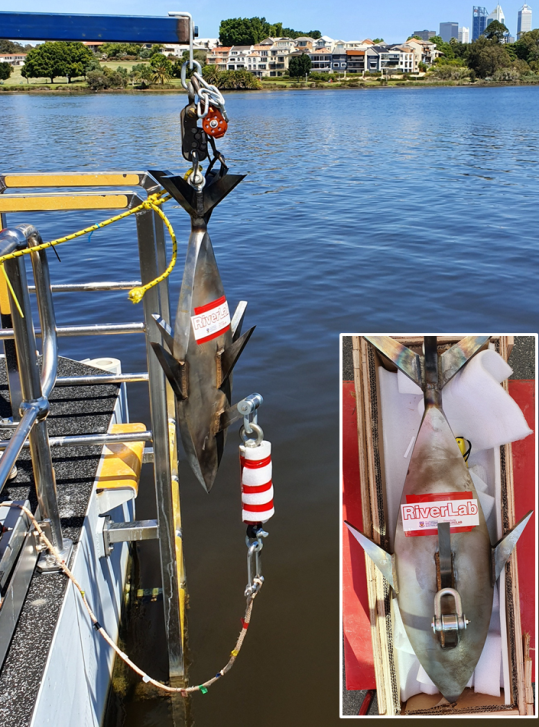PROJECT
Field investigation of a novel installed fish anchor
Field investigation of a novel dynamically installed fish anchor in the Swan River
Status: Current
Supervisors
- Muhammad Shazzad Hossain
Principle Research Fellow, Centre for Offshore Foundation System, UWA
- Shiaohuey Chow
Senior Lecturer, Department of Infrastructure and Engineering, University of Melbourne
- Youngho Kim
Research Fellow, Centre for Offshore Foundation System, UWA
Students
- Ashish Dalal
Master of Professional Engineering Student
Project Description
Deep and ultradeep water oil and gas developments pose many challenges for the anchoring systems that tether the floating platforms to the seabed. The offshore oil and gas industry is therefore currently directing considerable efforts towards cost-effective anchoring solutions suitable for deep water. Dynamically installed anchors are being considered increasingly because of their low installation cost. Anchors are installed by free-fall dropping through the water column and then penetrating into the seabed by the accumulated kinetic energy and submerged anchor weight.
At UWA, we have developed a novel dynamically installed fish anchor, adopting a geometry taken from nature (patent number: 10-2017-0018688). To assess the performance of the fish anchor, particularly in Australia’s calcareous seabed sediments, we have carried out two series of 1:133 scale model tests in a centrifuge, and an extensive series of parametric large deformation finite element analyses (Chang et al. 2019a,b,c, Kim et al. 2018). The results have confirmed the advantages of the fish anchor over other (torpedo and OMNI-Max) dynamically installed anchors.

Figure 1 Model fish anchor
To confirm the field applicability of the fish anchor, it was necessary to carry out some large scale or full scale tests in the field. With the support of a previous RiverLab project concluding in Nov 2019, we have fabricated a 1:15 scale model fish anchor and carried out a series of field trials in the Swan River (see Fig. 1). However, due to unforeseen delay (e.g. model fabrication, 3D printing etc.), only very limited number of field trials (at an identical impact velocity) were conducted at the Burswood Jetty and in the river.
Building on the previous RiverLab project, this project aims at further validating the performance of the fish anchor in the Swan River by varying the impact velocity and loading inclination angle. To achieve that, we would like to seek support from the RiverLab for the barge hire cost for carrying out a series of tests in the Swan River (see ‘Budget’ for more details). We will recruit two Masters Students to conduct the field trials. With the insights gained from this project, the next plan is to carry out trial tests in a real offshore field, consisting of calcareous seabed sediments, under a large project umbrella (e.g. ARC Linkage Project).
References:
- Chang, K., Hossain, M.S., Wang, D. and Kim, Y.H. (2019). Performance of a novel dynamically installed fish anchor in calcareous silt. Journal of Geotechnical and Geoenvironmental Engineering, ASCE, 145(6), 04019019-1-14.
- Kim, Y.H., Hossain, M.S. and Chang, K. (2018). Numerical investigation of novel dynamic installed anchors in clay and calcareous silt. Ocean Engineering, 163, 29-39.
- Hossain, M.S., Kim, Y.H., Shim, J.U. and Ryu, M.C. (2017). Anchor for deep seabed. Korea Patent Application No. 10-2017-0018688.
